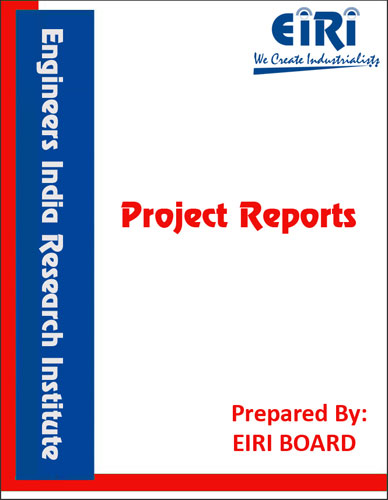ZINC STEARATE PRODUCTION LINE (DIRECT METHOD) CAP: 500 TON/YEAR
The project report includes Present Market Position and Expected Future Demand, Market Size, Statistics, Trends, SWOT Analysis and Forecasts. Report provides a comprehensive analysis from industry covering detailed reporting and evaluates the position of the industry by providing insights to the SWOT analysis of the industry.
We can prepare PROJECT REPORT as per your INVESTMENT PLAN for BANK LOAN REQUIREMENT and INDUSTRY ANALYSIS. All reports are prepared by highly qualified consultants and verified by a panel of experts.
Have Query? Click Here to Chat
Industry Expert is Online, Chat with him for more detail.

Zinc Stearate are known as driers and metallic soaps. It has long been established that the metal or action of the metallic soap is the active principle which accelerates the oxidation and polymerisation reaction associated with the drying of oils. As many as twenty four metals are known to have activity, but the soaps of cobalt, manganese, lead, iron, calcium, zinc and ziroconium account for the major share of present day use. Of these cobalt, manganese, lead and iron soaps are the primary driers. Calcium, zinc and ziroconium soaps alone do not promote drying. They are useful only in conjunction with one or more of the primary driers, and thus are termed auxilliary driers. The organic or anion portions of the metallic soaps used as driers act as carrying and solubilizing agents. Because of their stability, excellent solubility and low cost, soaps based on naphthenic acid, tall oil and 2-ethylhexoic acid account for the major portion of the driers in use today. Driers made with rosin, oleic and linoleic acids have declined in use, but are still manufactured for special purposes. Driers based on newly available synthetic, tertiary organic acids have been developed.
These acids are in the 9-11 carbon range and thus have a higher acid value than those with a larger number of carbon atoms, permitting driers of higher metal content. Regarding the manufacture of stearates, in the same plant and machinery all the few stearates can be manufactured. The process of manufacture is also very simple. The consumption of Zinc Stearate is increasing due to increase in production of plastics and rubbers and increasing demand for cosmetic and pharmaceuticals.
Zinc Stearate is a chemical substance that has a white, fluffy, powdered appearance and is usually formed from a combination of Stearic acid and zinc oxide. It does not have a strong odor, although traces of a slight fatty acid scent are not uncommon Zinc Stearate is a compound of long-chain fatty acids with Zinc attached to it. Zinc Stearates are insoluble in polar solvents (like alcohol & ethers), but more soluble in in aromatic compounds and chlorinated hydrocarbons when heated.
It is a Zinc Salt of Fatty Acids [Zinc Stearate chemical formula is Zn (C17H35COO)2 ]. Also known as Zinc Octadecanoic acid. And it has the molecular mass of 632.35 g mol-1
Synonyms of Zinc Stearate are “Zinc Soap”, “Zinc Salt of fatty acid”, “Zincum”, “Zinc Octadecanoate”, “Zinc distearate” etc.
It is the most powerful mold release agent among all metal soaps. It contains no electrolyte and has a hydrophobic effect. Because of this versatility, this substance is used by many different types of companies, from plastic industries to concrete manufacturers. Its main application areas are the plastics and rubber industry where it is used as a releasing agent and lubricant which can be easily incorporated.
INTRODUCTION
USES AND APPLICATIONS
PROPERTIES & CHARATERISTIS
B.I.S. SPECIFICATION
GRADES OF ZINC STEARATE
MARKET SURVEY
EXPORT DATA OF ZINC STEARATE
IMPORT DATA OF ZINC STEARATE
PRESENT MANUFACTURERS, EXPORTERS OF ZINC STEARATE
MANUFACTURING PROCESS OF ZINC STEARATE (DIRECT METHOD)
PROCESS FLOW DIAGRAM
OTHER’S PRODUCTION METHOD OF ZINC STEARATE
PROCESS OF MANUFACTURE IN DETAILS
PROCESS FLOW SHEET
MATERIAL SAFETY DATA SHEET ZINC STEARATE
PLANT LAYOUT
PRINCIPLES OF PLANT LAYOUT
PLANT LOCATION FACTORS
EXPLANATION OF TERMS USED IN THE PROJECT REPORT
PROJECT IMPLEMENTATION SCHEDULES
SUPPLIERS OF RAW MATERIALS
SUPPLIERS OF PLANT AND MACHINERY
SUPPLIERS OF PLANT AND MACHINERY (GLOBAL)
APPENDIX – A :
1. COST OF PLANT ECONOMICS
2. LAND & BUILDING
3. PLANT AND MACHINERY
4. FIXED CAPITAL INVESTMENT
5. RAW MATERIAL
6. SALARY AND WAGES
7. UTILITIES AND OVERHEADS
8. TOTAL WORKING CAPITAL
9. COST OF PRODUCTION
10. PROFITABILITY ANALYSIS
11. BREAK EVEN POINT
12. RESOURCES OF FINANCE
13. INTEREST CHART
14. DEPRECIATION CHART
15. CASH FLOW STATEMENT



